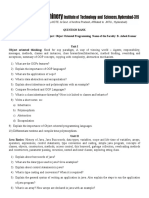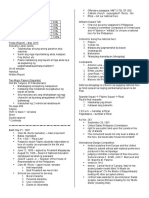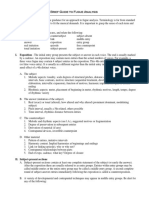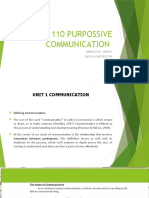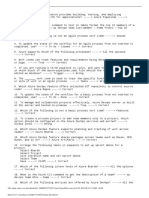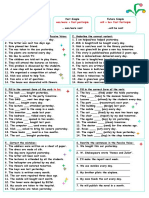0% found this document useful (0 votes)
42 views6 pagesOops Through Java-Ar23 Question Bank
The document outlines the syllabus for the Object Oriented Programming through Java course for CSE Allied Branches, detailing topics such as OOP principles, Java features, data types, control flow, classes, inheritance, exception handling, multithreading, and JavaFX GUI. It includes a structured breakdown of units with questions categorized by cognitive levels according to Bloom's Taxonomy, along with reference and textbook recommendations. The course aims to equip students with foundational and advanced Java programming skills through practical applications and theoretical understanding.
Uploaded by
roronoazoroooo770Copyright
© © All Rights Reserved
We take content rights seriously. If you suspect this is your content, claim it here.
Available Formats
Download as DOCX, PDF, TXT or read online on Scribd
0% found this document useful (0 votes)
42 views6 pagesOops Through Java-Ar23 Question Bank
The document outlines the syllabus for the Object Oriented Programming through Java course for CSE Allied Branches, detailing topics such as OOP principles, Java features, data types, control flow, classes, inheritance, exception handling, multithreading, and JavaFX GUI. It includes a structured breakdown of units with questions categorized by cognitive levels according to Bloom's Taxonomy, along with reference and textbook recommendations. The course aims to equip students with foundational and advanced Java programming skills through practical applications and theoretical understanding.
Uploaded by
roronoazoroooo770Copyright
© © All Rights Reserved
We take content rights seriously. If you suspect this is your content, claim it here.
Available Formats
Download as DOCX, PDF, TXT or read online on Scribd
/ 6






















































